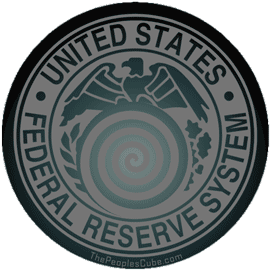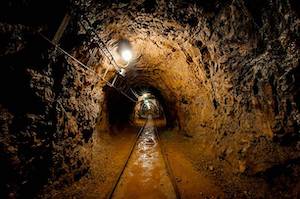 “If we evaluate an organization’s performance by what it promised when it was created, the Federal Reserve has clearly failed the American people,” is how Murray Sabrin concludes this documentary on the first 100 years of the Fed’s reign. The sad truth, he details, is that “the USD has lost more than 95% of its purcahsing power since the Fed was created and the cost of living has skyrocketed since Nixon severed the last linkage between the USD and gold in 1971.” In short, the revolution of 1913 shifted power from individuals, communities and states to the federal government and its powerful allies in the private sector.
“If we evaluate an organization’s performance by what it promised when it was created, the Federal Reserve has clearly failed the American people,” is how Murray Sabrin concludes this documentary on the first 100 years of the Fed’s reign. The sad truth, he details, is that “the USD has lost more than 95% of its purcahsing power since the Fed was created and the cost of living has skyrocketed since Nixon severed the last linkage between the USD and gold in 1971.” In short, the revolution of 1913 shifted power from individuals, communities and states to the federal government and its powerful allies in the private sector.
1913 was, in many ways, one of the most extraordinary years in American history. In fact, according to one analyst a revolution took place in 1913.
1913 began with the ratification of the 16th amendment, which gives the federal government authority to tax the income of the American people directly. We will explore the income tax on April 17 next year at a symposium I will moderate. So save the date April 17 at 7 PM in the Trustee’s Pavilion.
In April of 1913, the 17th amendment to the Constitution was ratified ending the selection of US senators by state legislatures. Now the U.S. Senators would be elected directly by the people.
And on December 23 President Wilson signed the Federal Reserve Act giving the United States a permanent central bank.
All these events took place at the end of what is known as the Progressive Era, a time of supposedly great reforms to benefit the common man. Half a century ago historian Gabriel Kolko challenged the orthodox view in his trailblazing book, The Triumph of Conservatism. Kolko argued that the progressive era was in reality a time when big business interests used the power of the federal government for their own benefit at the expense of the general public.
One of the last so-called reforms of the era was the creation of the Federal Reserve.
In short, the revolution of 1913 shifted power from individuals, communities and states to the federal government and its powerful allies in the private sector. Hence, the Progressive Era expanded crony capitalism in America.
The documentary, The Federal Reserve: 100 Years of Boom Bust, explores the impact of the Fed on the US economy for the past century.
Published at Zero Hedge, December 11, 2013.
FAIR USE NOTICE: This site contains copyrighted material the use of which has not always been specifically authorized by the copyright owner. We are making such material available in our efforts to advance understanding of environmental, political, human rights, economic, democracy, scientific, and social justice issues, etc. We believe this constitutes a ‘fair use’ of any such copyrighted material as provided for in section 107 of the US Copyright Law. In accordance with Title 17 U. S. C. Section 107, the material on this site is distributed without profit to those who have expressed a prior interest in receiving the included information for research and educational purposes. For more information go to: http://www.law.cornell.edu/uscode/17/107.shtml“








